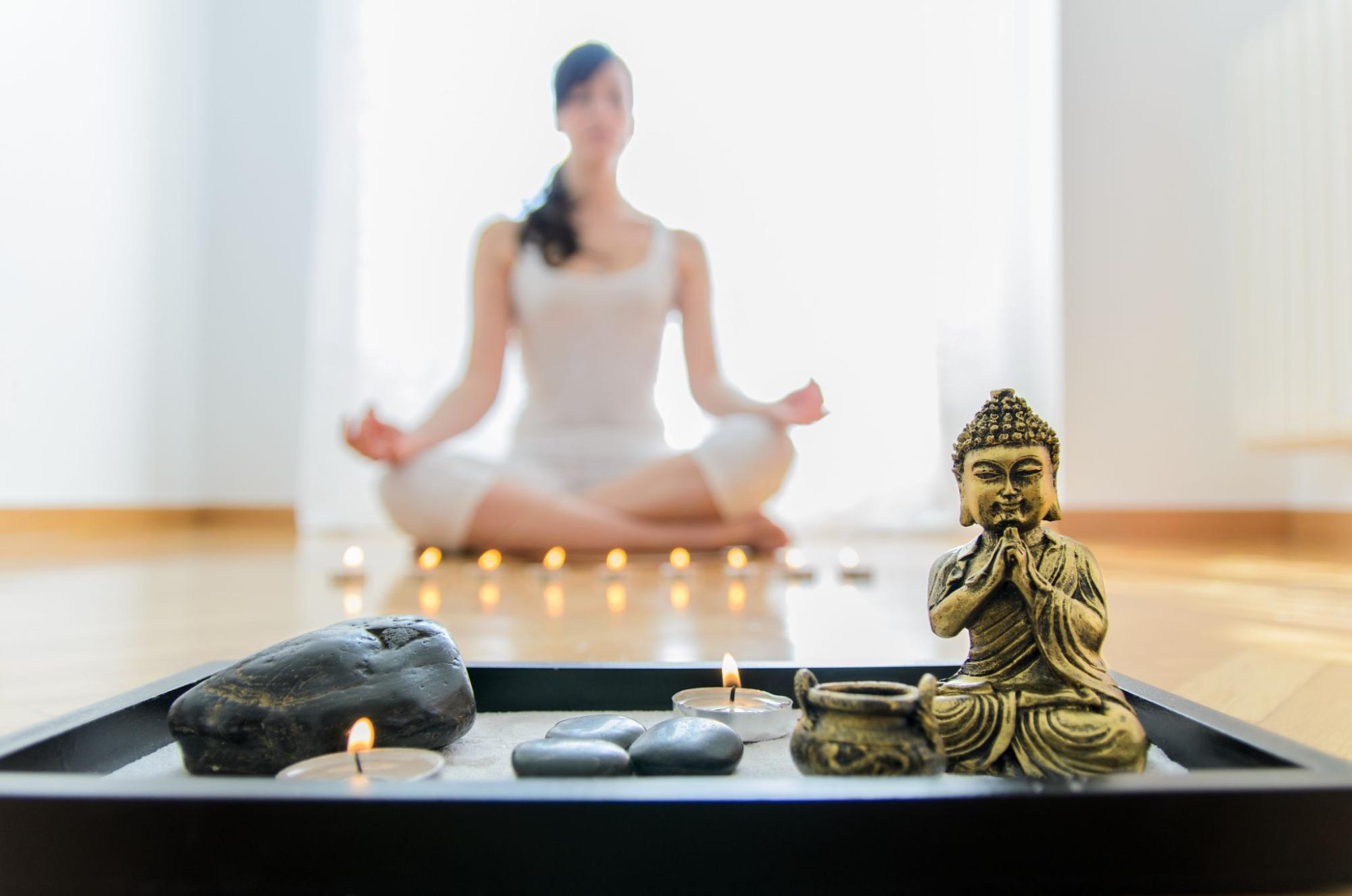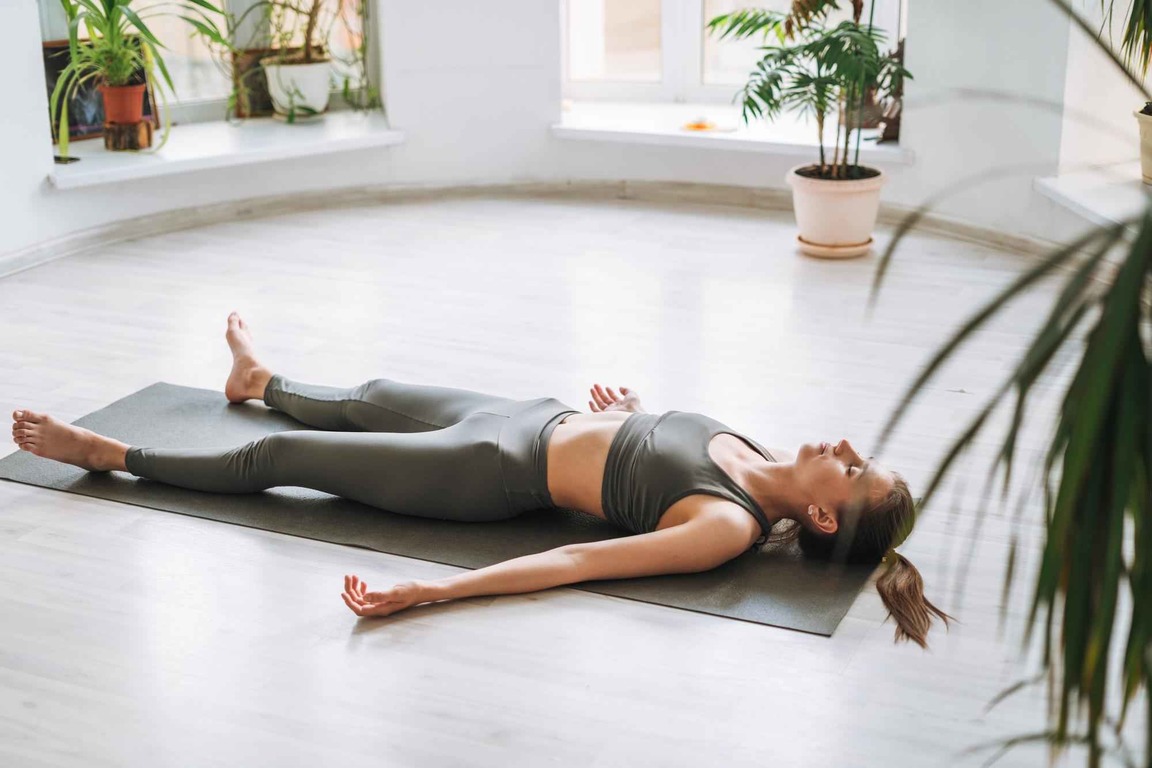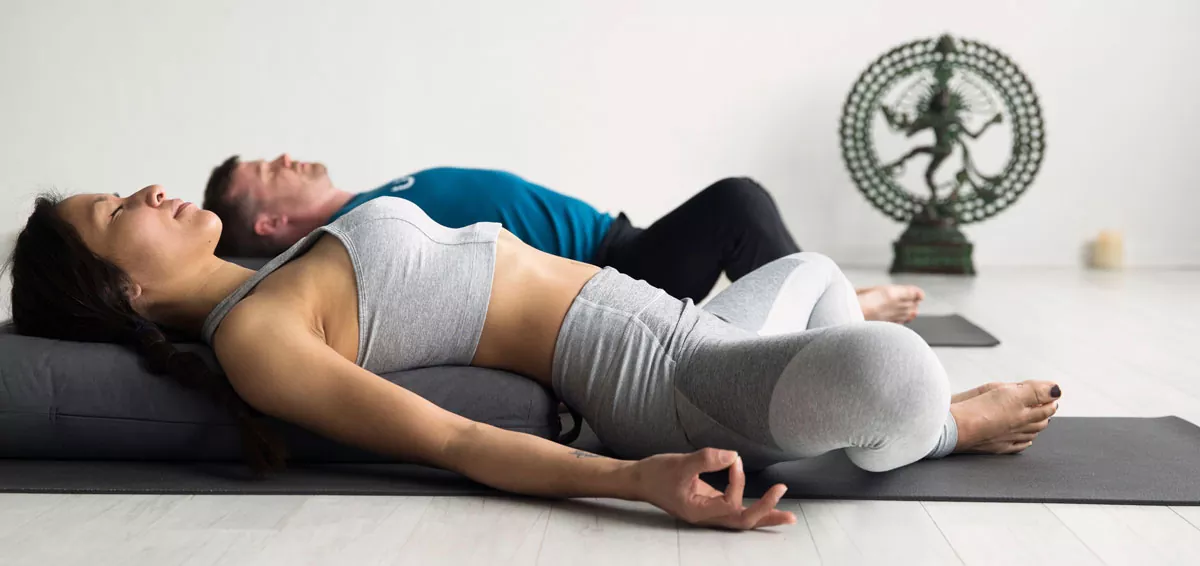
Embracing Tranquility with Meditation and Yoga
July 26, 2023
Are you ready to bring an element of calm to your life? Yoga and meditation practices can help you achieve a new level of tranquility. Think of lower stress levels, more control in challenging situations, and an overall sense of well-being.
Sounds hard to achieve? It doesn’t need to be, even if you’ve never practiced yoga or meditation before. Integrating just a few minutes of yoga and meditation can help you reach that coveted level of quietness every day. Read on to find out how to start reaping the benefits of yoga meditation.
What is Yoga Meditation?

If you’ve read our blog before, you may already know that yoga is an excellent practice for both your body and your mind. For many seasoned practitioners, meditation is an essential part of their regular practice. It’s the part that helps you access your mind and calm it down, allowing you to take control of emotions that can sometimes feel overwhelming. If you’re new to yoga or find yourself struggling with building a meditation practice, this practice can be an excellent gateway.
Before we go any further, let’s clarify what we mean by yoga meditation. Although the two terms are often mentioned together, they are actually separate practices. You can do one without the other. Combining the two, however, allows you to create greater awareness both through physical exercises (asanas) and mental practice.
Yoga meditation is a way of connecting the two. Typically, it comes at the end of your physical yoga practice. Having moved your body and created awareness through a series of poses, you use yoga meditation to relax your body and focus your mind.
Which Poses Are Good for Meditation?

If you have attended any yoga classes at all, chances are you have already tried one of the most popular yoga meditation poses. We’re talking about savasana, or corpse pose. It’s perhaps the most widely used asana to round off classes from beginner to advanced practitioner level.
In savasana, you lie on your back with your eyes closed and breathe deeply to help relax every single muscle in your body. The goal is to let go of tension and ‘simply’ relax. On the surface, it sounds very straightforward, but savasana can be challenging all on its own.
Why can it feel hard at times? Because you’re trying to relax your body and quiet your mind while retaining awareness of the present moment. That requires practice and repetition. If you practice savasana a few times every week or even every day, you’ll find that the pose feels different every time.
As you become more experienced, it gets easier to achieve that combined state of relaxation and awareness. This is how savasana helps you transition from your yoga practice to meditation.
How Can I Practice Yoga for Mindfulness?
Like meditation, mindfulness is often mentioned in combination with yoga. They aren’t the same, but they do complement each other, and practicing mindfulness can create another path from yoga to meditation.
Mindfulness trains you to focus on what is happening in the present moment. That may not sound like much, but many practitioners find it transformational for their physical and mental well-being.
Mindfulness has never been truly separated from yoga. However, when you’re practicing mindful yoga, your focus is on the connection between your body and your mind rather than the exact details of the posture. The asana becomes a tool to cultivate mindfulness rather than the purpose of your practice.
Some practitioners consider mindfulness as a form of meditation already. Whether you agree or not, it’s an excellent gateway between the two and one of the most powerful tools to move from physical focus toward meditation.
What is Yoga Nidra Meditation?

Is yoga meditation the same as Yoga Nidra? Not quite. Think of yoga meditation as an active practice. You’re trying to focus your mind on a specific area like your breath. Yoga Nidra, on the other hand, allows your mind to drift and reach a deep state of relaxation, also known as yogic sleep.
If you practice Yoga Nidra in a class, your instructor will lead you through a guided meditation to release physical and emotional tension, slow down your nervous system, and help your muscles relax. This guidance triggers a relaxation response.
For most practitioners, this kind of deep relaxation reduces stress in the mind and the body. You may notice headaches resolving and muscle tension easing. If you practice Yoga Nidra regularly, your practice can even improve cognitive function.
How does that work? Think of it this way: whenever you get stressed, space is taken up in your brain. Your brain is simply overwhelmed by emotions, leaving little room for anything else. That is why it’s so critical to reduce your stress levels, and Yoga Nidra can help you achieve that alongside other benefits that could easily fill another blog.
How Can I Get Started with Yoga Meditation?
Would you like to try adding meditation to your practice? Perhaps you’ve tried before and simply found it too hard to enter or remain in a state of meditation.
If that sounds like you, our Flow + Meditation classes are for you. These 60-minute classes are held at our Uptown studio and allow you to experience the benefits of practicing physical asanas before guiding you gently toward the beginnings of meditation. Beginners and seasoned yoga and meditation practitioners can equally benefit from these classes.
Our experienced instructors understand that finding a path to meditation can be tricky at times. But with their guidance and a bit of practice, you’ll soon find a style of yoga and meditation that benefits you most.
Take a look at our schedule today and choose a class that suits you!




